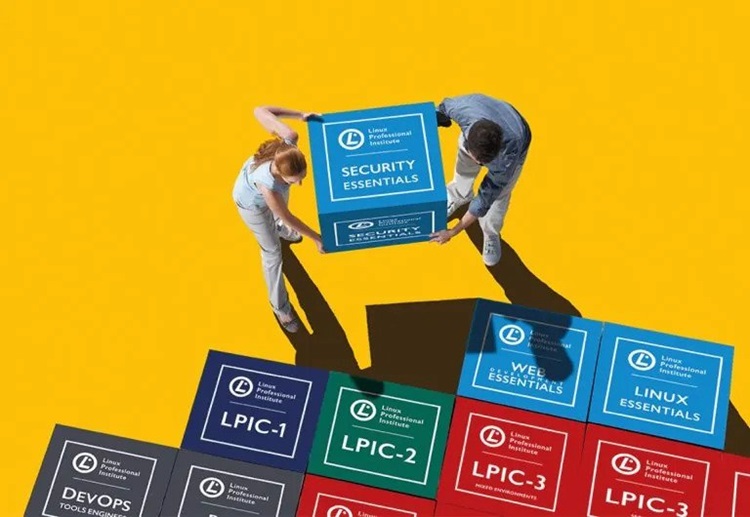Saturday, 30 December 2023
Unleashing the Power of LPI (Linux Professional Institute) GNU/Linux
Thursday, 28 December 2023
From Linux to DevOps Excellence: The Tools Engineer's Journey Unveiled
Introduction
Understanding the Linux Foundation
Transitioning to DevOps
Orchestrating Success with Kubernetes
Continuous Integration and Deployment
Infrastructure as Code
Monitoring and Logging
Tuesday, 26 December 2023
Unveiling the Power of LPI Certifications: A Comprehensive Guide
Introduction
Understanding LPI Certifications
The Impact of LPI Certifications on Career Advancement
How to Prepare for LPI Certifications
Saturday, 23 December 2023
Morrolinux: Debunking the 5 Myths About GNU/Linux
Myth 1: “Linux is a Refuge for the Moneyless”
Myth 2: “Linux is an Endless Work in Progress”
Myth 3: “The Learning Curve for Linux is Prohibitive”
Myth 4: “Linux is Not for Gamers”
Myth 5: “Linux is Immune to Viruses and Malware”
Thursday, 21 December 2023
Unleashing the Power of a Linux Professional Institute DevOps Tools Engineer
Introduction
Understanding the Role
Key Responsibilities
Skill Set and Qualifications
Industry Impact
Tuesday, 19 December 2023
Unveiling the Pinnacle of Web Development: Linux Professional Institute Essentials
Introduction
Understanding Linux Professional Institute Web Development
Why Choose Linux Professional Institute for Web Development?
Outranking the Competition
Saturday, 16 December 2023
Unleashing the Power of BSD Specialists: A Comprehensive Guide
Introduction: Understanding the Role of a BSD Specialist
The BSD Advantage: An Overview
Core Responsibilities of a BSD Specialist
Key Skills Every BSD Specialist Should Possess
BSD Specialist vs. General IT Professionals: Bridging the Gap
Hiring a BSD Specialist: What to Look For
Thursday, 14 December 2023
Unleashing the Power of Linux Professional Institute LPIC-2 Certification
Elevate Your Expertise with LPIC-2: The Gateway to Linux Mastery
Are you a tech enthusiast eager to carve your niche in the world of Linux? Look no further! The Linux Professional Institute LPIC-2 certification is your ticket to advanced Linux proficiency, and we're here to guide you through the transformative journey it offers.
Understanding the LPIC-2 Advantage
Mastering Advanced Linux Skills
LPIC-2 is the second level of the Linux Professional Institute Certification, designed to validate your expertise in advanced Linux administration and engineering. It's a pivotal step for professionals looking to deepen their understanding and skills beyond the foundational LPIC-1 level.
Real-World Relevance
What sets LPIC-2 apart is its emphasis on real-world, practical skills. The certification ensures that you're not just equipped with theoretical knowledge but can adeptly apply it in professional scenarios, making you an asset in the dynamic landscape of Linux administration.
The LPIC-2 Curriculum Demystified
Kernel Configuration and Maintenance
LPIC-2 delves deep into the intricacies of Linux kernel configuration and maintenance. Candidates learn the art of optimizing kernel parameters, ensuring system stability, and troubleshooting kernel-related issues. It's the ultimate guide to mastering the beating heart of Linux.
Network Configuration and Security
Networking is at the core of any robust IT infrastructure, and LPIC-2 recognizes its significance. From advanced routing and traffic control to securing network services, this certification covers it all. Elevate your network administration skills and fortify your systems against potential threats.
Capacity Planning
Effective capacity planning is crucial for seamless system performance. LPIC-2 equips you with the tools to analyze system resource usage, predict future requirements, and optimize performance. Say goodbye to bottlenecks and hello to a finely-tuned Linux environment.
Filesystem and Device Management
A Linux professional's expertise extends to managing filesystems and devices efficiently. LPIC-2 explores advanced filesystem concepts, RAID configuration, and device management, ensuring you're adept at handling storage complexities in diverse IT environments.
The LPIC-2 Certification Journey
Preparation Strategies
Embarking on the LPIC-2 certification journey requires strategic preparation. Leverage official study materials, practice exams, and hands-on experience to solidify your knowledge. Engage with the Linux community, attend workshops, and stay updated on industry trends to enhance your practical skills.
Exam Logistics
The LPIC-2 exam comprises two separate exams (201 and 202), each validating specific skills. Familiarize yourself with the exam objectives, allocate sufficient time for preparation, and simulate exam conditions through practice tests. Confidence is the key to success.
Why Choose LPIC-2 Over Alternatives?
Industry Recognition
LPIC-2 is globally recognized, providing a significant edge in the competitive IT landscape. Employers value the comprehensive skills it validates, making certified professionals highly sought after in the job market.
Career Advancement
Earning LPIC-2 opens doors to diverse career opportunities. Whether you aspire to be a system administrator, network engineer, or cloud architect, this certification paves the way for career advancement and higher earning potential.
Conclusion: Elevate Your Linux Journey with LPIC-2
In conclusion, the Linux Professional Institute LPIC-2 certification is not just a qualification; it's a testament to your prowess in advanced Linux administration. Embrace the LPIC-2 journey, unlock new career horizons, and position yourself as a Linux expert poised for success.
Tuesday, 12 December 2023
Exam Preparation with the LPI Learning Materials
Objectives and Lessons
Lesson Structure
For Classes and Self-study
Languages and Formats
- Cover all topics relevant to the exam
- Classroom-ready structure
- In class or for self-study
- Available in many languages
- Ongoing updates and corrections
- Free of charge for non-commercial use
- Co-branded PDFs for LPI Training Partners
Saturday, 9 December 2023
Mastering LPI WDE: Materials, Practice, Simulations
How can I prepare for the LPI’s WDE certificate exam?
And for practice?
Web Development Essentials Exam simulations
Just the beginning
Tuesday, 5 December 2023
The Linux Advantage: Why Free Software Underlies Modern Computing
- Android (based on Linux) has surpassed Windows as the world’s most popular operating system as of April 2023. This achievement is attributed to the popularity of mobile devices, although Windows still dominates desktop and laptop systems. Android itself is open source, although Google strictly controls development for Google-based mobile devices.
- Linux is also the most popular guest operating system in the cloud. (Cloud hardware runs host operating systems, on which clients run their systems as guests.) Four years ago, tech journalist Steven Vaughan-Nichols reported that even Microsoft’s own Azure cloud service was running more Linux guests than Windows guests.
- The embedded space is even more lopsided. Here, Windows and macOS systems are not even considered because of their heavy desktop-suited footprints. For embedded systems, Linux competes with a few dedicated embedded operating systems, many of which are also open source.
- Vaughan-Nichols also reports that by 2015, 96.3% of the top one million web servers were running Linux.
- All of the world’s top 500 supercomputers run Linux.
Operating systems are complex nuts to crack
Get ahead of the starting line as a developer
No struggle with licenses
The advantages of Linux make it more attractive over time
Saturday, 2 December 2023
Edutech Europe, Amsterdam, 2023: My Takeout
Fostering Shared Understandings
Redefining Learning Experiences
Pedtech: The Future of Learning
… What About FOSS?
Thursday, 30 November 2023
LPI WDE #5: Server-Side Programming with Databases and Node.js
Node.js for back-end programming
- Ease of learning: Developers who are already familiar with JavaScript and have been working on client-side programming don’t need to learn another programming language to develop their server-side applications. A front-end developer who already masters JavaScript can easily start working on the back-end part of an application without much effort.
- Ability to create complete and functional applications: Even with knowledge of just one programming language, JavaScript, it is possible to work as a full-stack developer who has expertise in both client-side and server-side development. This enables the creation of comprehensive and fully functional applications.
- Ability to create various types of applications: With an environment that allows the execution of JavaScript code, it is possible to create standalone programs that can run without the support of a web browser. This opens up possibilities for creating applications of different types and scenarios.
How to enhance your applications
Database interrogation
- Create and delete tables
- Define the fields and types of data allowed in each table, known as its schema
- Update data in tables
- Insert and delete rows in tables
- Retrieve information
- Maintain and optimize databases
| SQL Database | NoSQL Database |
| Microsoft SQL Server | MongoDB |
| SQLite | CouchDB |
| MySQL | Redis |
| MariaDB | |
| PostgreSQL |




















